Cargando...
Recursos educativos
-
Nivel educativo
-
Competencias
-
Tipología
-
Idioma
-
Tipo de medio
-
Tipo de actividad
-
Destinatarios
-
Tipo de audiencia
-
Creador
Lo más buscado
- Ejemplo de descripción literaria
- Letras C
- Ángulos interiores de un polígono
- Ejercicios escolares para niños de 6 años
- Juegos de matemáticas segundo
- imágenes matemáticas
- Artes escénicas, música y danza
- Animales que respiran por la piel
- Biosfera para primero
- Ángulo adyacente
- Razonamiento en ESO
- Día mundial del agua
- Comarques de Catalunya para primero
- Experimentos tercero
- Imprimir material quinto
-

Avaluació inicial T12 02 - La reproducció humana
EduBook Organización
- 2374 visitas
Tria per a cada funció la part de l'aparell reproductor que la realitza: Forma els òvuls. Alimenta el fetus. Porta els espermatozoides fins a l'exterior del cos. Forma els espermatozoides.
-
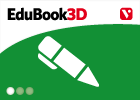
Contesta. La reproducció humana
EduBook Organización
- 2373 visitas
Recorda el que has treballat en aquest apartat i contesta: Com s'anomena el procés en el qual es forma un zigot? Quines dues cèl·lules s'uneixen? En què consisteix la reproducció sexual?…
-
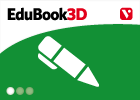
Raona. El fetus
EduBook Organización
- 2367 visitas
Raona i contesta les preguntes següents: En el darrer mes de l'embaràs el fetus fa uns 50 centímetres del cap als peus, però l'úter no s'allarga tant... Què fa el fetus per tal de…
-
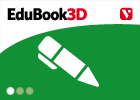
Interpret. Climate chart for Madrid
EduBook Organización
- 2366 visitas
Look at the climate chart for Madrid and answer the questions. What is the average temperature in the hottest month in Madrid? And in the coldest month? In which month does it rain the most? And the least?
-
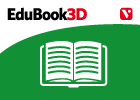
Summaries - Animals
EduBook Organización
- 2368 visitas
1. Vertebrates Vertebrates are the group which contains the human species. They have an internal skeleton, made of bones. The name comes from the vertebrae, which make up the spine (backbone), which…
-
True/false. Characteristics of amphibians
EduBook Organización
- 2377 visitas
Decide if the following statements are true or false: Amphibians live in salt water. ➝ The skin of amphibians is always dry. ➝ They have four legs. ➝ Amphibians breathe through their skin and with…
-
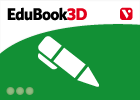
Answer. Plants
EduBook Organización
- 2360 visitas
Look at the photos: Describe the plants you can see. Can you name any of them? What differences and similarities can you see between the plants? How are plants different to animals? Why are plants so…
-
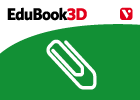
Budding in corals
EduBook Organización
- 2370 visitas
Corals are cnidarians that live in big colonies where thousands of other individual corals grow. Corals reproduce asexually by budding. Each coral starts life as a single individual. The individual…
-
Final self-evaluation 07 - Animal reproduction
EduBook Organización
- 2370 visitas
Decide if the following statements are true or false: The length of gestation is the same for every species. ➝ The shells of eggs allow them to dry. ➝ Birds look after their young after birth. ➝…
-
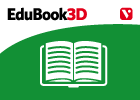
Materials and their properties - Matter and materials
EduBook Organización
- 2376 visitas
What are materials? Materials are the different types of matter that objects are made from. Some materials, like wood, cotton and wool, are found in nature. They are called natural materials. We use…
Te estamos redirigiendo a la ficha del libro...













